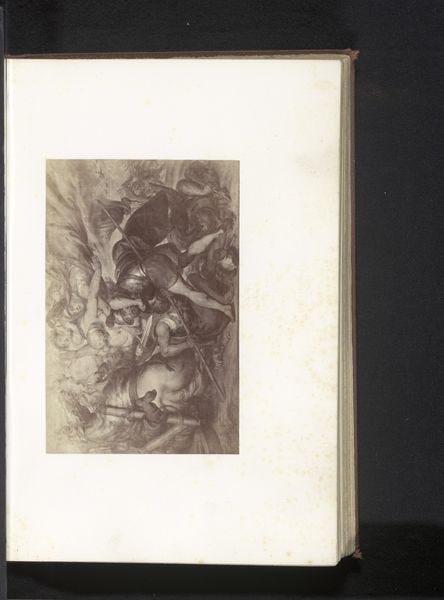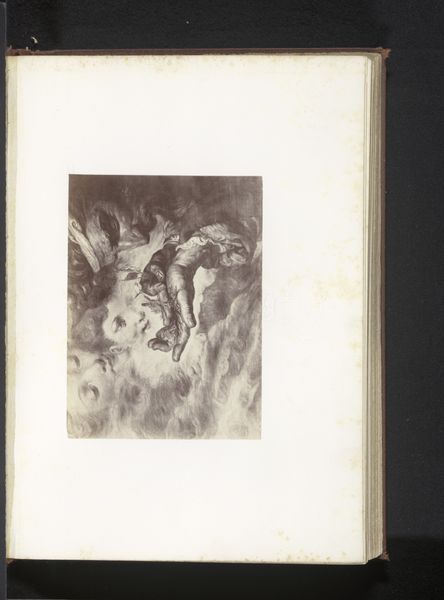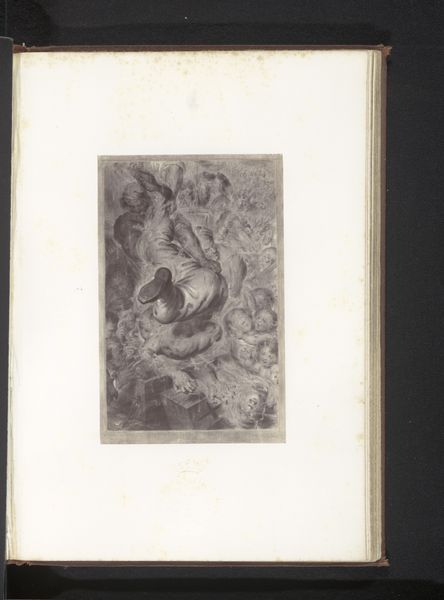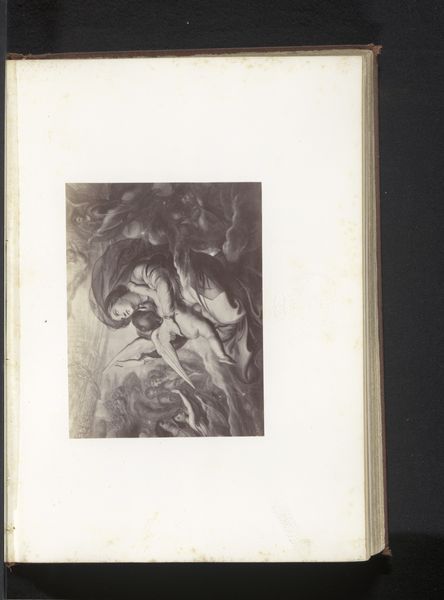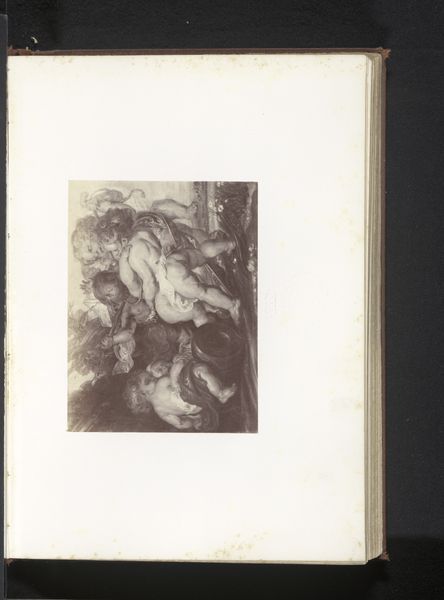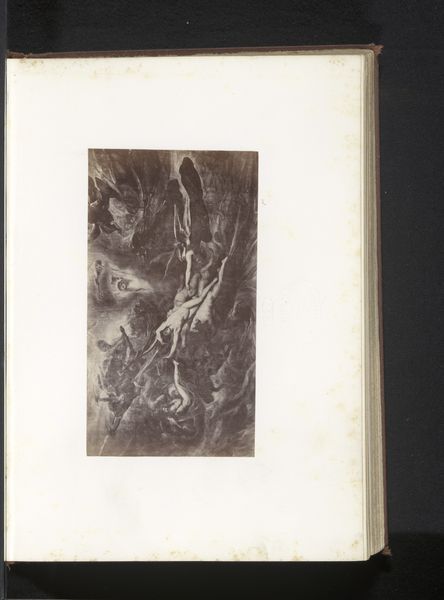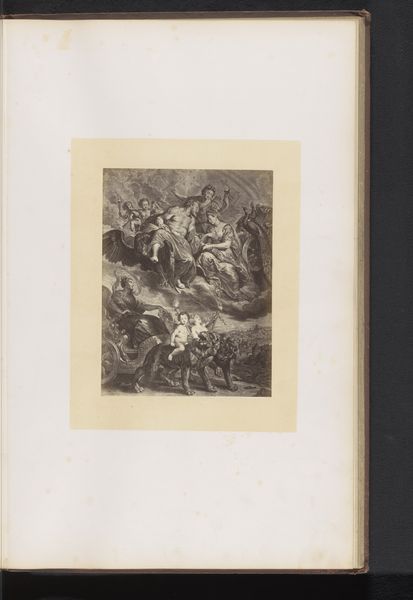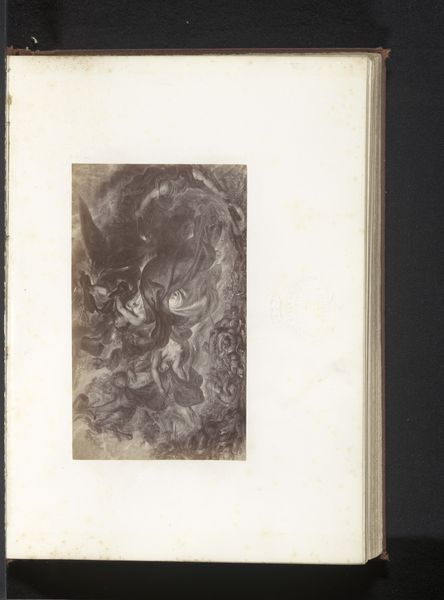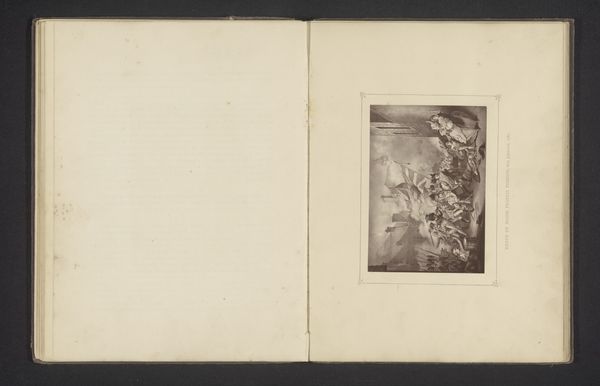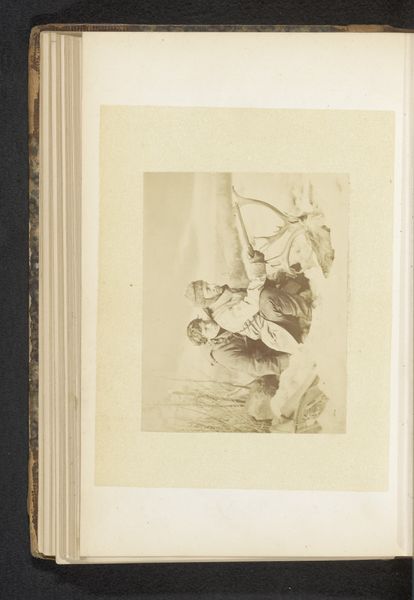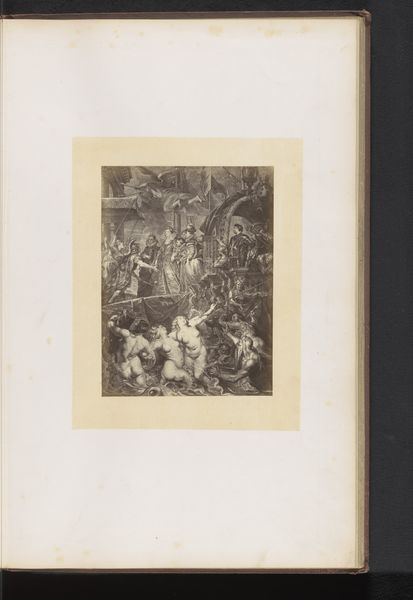
Fotoreproductie van De menselijke macht kent geen grenzen door Antoine Wiertz before 1868
0:00
0:00
Dimensions: height 169 mm, width 111 mm
Copyright: Rijks Museum: Open Domain
Editor: Here we have a gelatin-silver print reproducing Antoine Wiertz's painting, "The Human Power Has No Limits," dating from before 1868. The monochrome palette certainly lends it a dramatic flair, and the upward surge of figures gives it dynamic movement. What strikes you most about its visual impact? Curator: It is the dialectic between the corporeal figures and their immaterial, cloud-like setting that most intrigues. Note how Wiertz, even through this reproductive medium, manipulates light and shadow to define form. Do you observe how the tonal gradations articulate muscle and drapery? Editor: Yes, I see the pronounced chiaroscuro creating almost a spotlight effect on the central figures. What effect do you think this was intended to create? Curator: Precisely. It amplifies the expressive capabilities within the frame. Consider the semiotic function of such devices: light signifying the divine, shadow representing earthly concerns. Further, how do those shapes affect our sense of space, pushing figures forward while suggesting infinite recession? Editor: The composition feels very Baroque, maybe even a bit theatrical. Curator: Agreed, and consider how that theatricality functions as a structural component. The dynamism you noted is channeled by compositional asymmetry. It resists static interpretations. How would you describe its treatment of line, compared, say, to a neoclassical work? Editor: Where a neoclassical work might have crisper, more defined lines, these seem almost blurred, more implied than explicitly drawn, adding to the movement and energy. I now notice how effectively the gelatin-silver print captures those painterly effects, blurring the boundary between mediums. Curator: Indeed. We must appreciate how the gelatin-silver print medium affects the interpretation of Wiertz's painting. The translator is an author, too. What could have been his intentions, transferring from painting to photograph? Editor: Seeing the photograph, versus an original print, prompts me to consider reproduction as another form of interpretation. Curator: Precisely. It is by engaging with the objecthood of image production itself that we unlock interpretive possibilities.
Comments
No comments
Be the first to comment and join the conversation on the ultimate creative platform.
